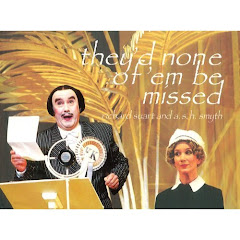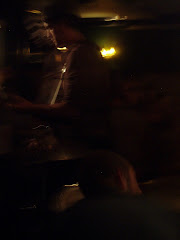Stormy Weather
Punchi Theatre, Borella, Colombo
10th-13th September
To die in one’s sleep may be considered a misfortune. To do so with fifteen stab wounds to the chest looks – more than somewhat – like murder.The morning after a bitter argument with his wife, ‘man about town’ Noel Richards wakes up dead.
– Smyth, after Wilde
Of course, as only befits our Fifties noir setting, the investigating inspector soon discovers that all of the women in Noel’s life had reason to be involved in its grisly termination – his sister and lover (two separate people, I hasten to add) are also in the frame.
Written and directed (twice over) by Jehan Aloysius, and presented by CentreStage Productions, Stormy Weather is a neatly ironic homage to the celluloid murder mysteries of yesterdecade, augmenting stage action with film flashbacks, and all underlaid by an exuberantly over-atmospheric score (also composed by the writer-director).
Playing off the clench-jawed and unpleasantly masculine Noel (Amesh De Silva), the three potentially fatales femmes were, in turn, suitably vampish, agonised, and just plain bitchy. Shanuki De Alwis strutted as Charmaine, Noel’s drunken and volatile sister, with boisterous aplomb; Michelle Herft steered Therese, his spurned wife, through grief and rage in consecutive moments; and Dilrukshi Fonseka no less than embodied the feline spitefulness of Noel’s lover, Avanti (thank heavens she’s fictional, eh?).
Individually, each of these women seemed like a handful; together, they actually made one feel sorry for Noel. Freud, I am sure, would have had something interesting to say about a scene in which a naked man is repeatedly knifed, in his bed, by three (three!) women, at least two of whom could be considered relatives. (And as for the fact that the playwright’s mother positively ordered your reviewer to give the show a good write-up – well…)
It is no surprise if, in productions of this type, style threatens somewhat to overshadow content (pardon the pun): in such noir projects, style is almost a character in its own right.
Stormy Weather’s stage action – itself rendered exclusively in black & white – had the posing at an appropriately statuesque pitch, with the requisite number of hands-on-foreheads, slightly too-sexy couture, and everyone smoking furiously (perhaps a little joke within a joke: latter-day public school productions infamously followed this pattern, replete with the growing of totally gratuitous facial hair and the addition of ‘romantic’ scenes at every opportunity).
The film element deftly introduced – and thereby sidestepped – the inevitable melodrama of the noir genre before the play proper had even begun. It also helped to dodge the accusations of hammy-ness that stage gore invariably attracts. And the unabashed projection (as it were) of the genre from the outset permitted a few of the more clichéd lines – “Oh, how I wished her dead!”, etc. – to go underided.
Some sassy one-liners also helped leaven the morbidity, as did a few knowing remarks concerning Hollywood’s love of stereotype. Every man has his sticking point, and personally I found the blatant reference to “Agatha Christie mysteries” a step (and a clumsy rhyme) too far. But for the most part I enjoyed the cheeky post-post-(post-?)modern “where were you, inspector?” moments, and the astutely self-serving comments about “playing roles”. And was that a conscious nod to The Usual Suspects – the greatest ‘twist’ movie of all time – or did I imagine the capital letters?
Through no fault of his own, Mario de Soyza’s beleaguered sleuth was the least well-developed of the (admittedly, purposefully two-dimensional) characters. He also never worked out whodunit.
In the end, though – or, rather, substantially before the end – who did it was relatively obvious. In a small cast, process of elimination (it wasn’t suicide; X, Y and Z are just too obvious; dramatic rules don’t permit “an outsider”…) didn’t leave many options. Moreover, the play being commendably short, there was little time for that other vital facet of any murder mystery, the second-guessing of one’s initial hunches.
But if, in this hyper-stylistic exercise, the identity of the killer was of comparatively little consequence to the unfolding of the story, the denouement was none the less chilling for that. It is an amusing reflection on the Colombo cultural circuit that the programme implored attendees to “keep the murderer a secret for future audiences to enjoy the show”. Still, now that the curtain has fallen for the last time…
One particular oddity. “Noëlle”, which I originally took to be a sarcastic inflection (and feminisation) of the anti-hero’s name, turned out to be simply a consistent mispronunciation. Over the seventy minutes of the play, the cumulative effect of this minor slip managed to convey the impression that, fancy names notwithstanding, the whole tumultuous business had been firmly rooted in Cinnamon Gardens.
Now there’s a thought!







No comments:
Post a Comment